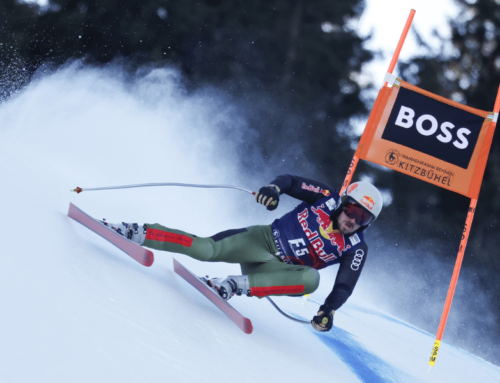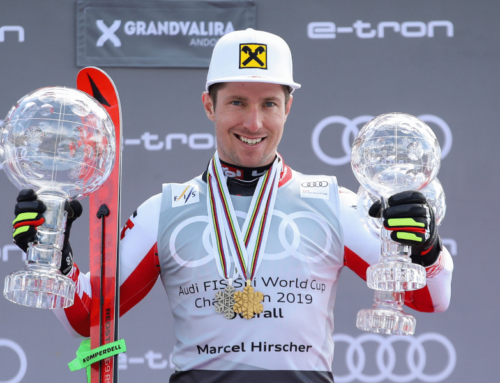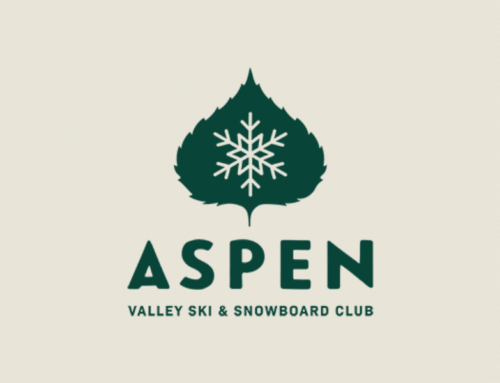Where Did All the Athletes Go?
Similar to many youth sports, ski racing sees a drop-off in athlete numbers starting at the U14 level and well on into high school. In fact, a study conducted by ESPN in 2013 says that between ages 14 and 15, there’s a 26% drop in kids who play one sport even casually. But ski racing operates on a different wavelength than most team sports available to high school aged kids and has different factors that create a higher level of entry and commitment than a kid playing for their high school soccer team.
Cost, equipment, time commitment, travel, missed days of school, and loss of interest are all driving factors for kids to drop out of a sport. Yet, there seems to be an escalated level of professionalization for ski racers pursuing an elite track, and beyond that, there is a lack of participatory levels that give kids more options than just FIS or high school.
In 2013, FIS changed the age for first-year FIS athlete’s from 15 to 16 years old. This rule change, in addition to other variables previously listed, means U16 athletes competing on the FIS track have a decision to make. Aldo Radamus, Team Summit’s Alpine Ability Director and former Executive Director at Ski & Snowboard Club Vail says that at that age, athletes really have two options. They are either in, or they’re out, he says. If athletes are in, they’re choosing to pursue a FIS racing program, pursuing training camps and full-time programming, committing to the cost, the travel, and the days missed at school. If they are out, there are limited opportunities for a more participatory track.
“The age change has made the barrier for FIS racing great, because there is less time to reestablish at that level, so it really calls the question whether or not it makes sense to continue on this path,” says Radamus. “I speak really through the lens of what goes on in Rocky [region] specifically, but once athletes are moving into the FIS ages then they go from having competed in age group competitions, to being in essentially an open FIS competition racing against adult athletes, college athletes, national team athletes, etc. etc. So there really aren’t those kinds of stepping stones that used to exist in our system.”
Overall, the continued escalation of professionalization of the sport, of its cost and the level of commitment that is needed to be successful are all factors that are driving dropout, Radamus said.
“I think, frankly, a lot can be done with the way the competition pipelines are structured to eliminate some of the real excesses that take place in the system from time to time,” Radamus said.
Limited opportunities for a more participatory track at multiple levels are negatively affecting participation in skiing, which not only discourages a less equipped kid from jumping into a high-level FIS race, it also has an impact on elite athletes hoping to use those races to continue staying involved.
According to Jon Nolting, Associate Executive Director and Athletic Director at Steamboat Springs Winter Sports Club, when course sets, terrain, and conditions are designed toward inclusivity, not toward prepping the elite for what is to come as they move forward in their career, it creates what he termed a “watered-down” field. Nolting thinks if competition series were more clearly defined, athletes and coaches would know who races were appropriate for. This would streamline pathways and improvements to retention could be made.
“If you had the competition series more clearly define who that level is appropriate for, then maybe you wouldn’t have kids chasing all these different events all over the country because it would be more clear cut where their path is,” says Nolting. “It’s pretty clear cut through U14. There aren’t all these different pathways, you’re a kid and you kind of go along that path and everyone is doing the same thing. It’s once you get into high school, that’s where there is all this distraction.”

A U16 athlete competes in the 2019 State Championships at Stratton Mountain, Vermont. Photo Courtesy of Pico Ski Club Racing’s Tom Martin.
Race chasing is common among athletes trying to establish their point profiles, and is a large contributing factor to cost and athlete fatigue, in Nolting’s eyes. From what he has witnessed in the Rocky Region, many athletes that leave are making decisions that are best for them and their families. In that case, he fully supports the high school route. Those athletes keep racing and continue to find joy in skiing.
It’s the kids around this critical high school age that are great skiers but have yet to realize their potential because maybe they are a late developer, they have less mileage on a race course, or are not properly being directed financially, that concerns him.
“I think we need to be really careful that we’re not doing selections, and we’re not incentivizing things at the U14 level such as pure race results too much, because pure race results at the U14 level and even at the U16 level, are not the only, or even the best indicator of future potential,” he said.
Race chasing, equipment, and membership fees add significantly to another major barrier in skiing: the sheer cost of entry and participation. Sheryl Barnes, Director of Member Services at U.S. Ski & Snowboard has been in her position for 23 years, so she knows that cost has always been a concern. Although Ski & Snowboard has toyed with various strategies on how to handle membership costs, there is no real trend that says any of those strategies have worked.
“Back in 14-15 or 15-16 when we did membership changes, we dropped prices at that point in the hopes that we could make it up in volume. We gained some volume, but not enough to make that up. We also did short-term memberships, which allowed for sport entry to try and get kids involved at younger ages and kind of get situated and committed to the sport at a young age,” says Barnes. “Unfortunately, we haven’t been able to keep the prices at that rate,” Barnes said.
Issues with cost do not fall directly on the back of U.S. Ski & Snowboard. In Nolting and Radamus’ eyes, change needs to be coming from the club and the academy level, where coaches and executives have the opportunity to better manage athlete’s.
“How have we structured our sport? What are the expectations we are creating in the athletes? Do as many athletes that are pursuing the elite athlete pipeline really need to be pursuing that pipeline and the sport at that level? Are there potentially healthier and more cost-effective ways to pursue the sport and still have the opportunity to advance through the pipeline to get to wherever their potential and commitment will take them?” questions Radamus.
At Steamboat Springs Winter Sports Club (SSWSC), Nolting and his team have a new plan to tackle the cost issue in the coming season by offering multiple competition pathways (at the recommendation of the coaches), that will better serve the athlete and family physically, mentally, and financially in the long run.
“I think the coaches really need to work with families where cost is the main barrier, they need to have open and frank discussions and the coach needs to be able to prioritize one thing over another. The coach can’t just say, this is all critical and you need to buy into all of this because the reality is that that is not true. It might be equipment where you can save on some costs, it might be wax, it might be travel, there are ways. And the coach needs to be willing to help counsel those families and then likewise, the families need to be comfortable asking the coach,” said Nolting.
Could these strategies along with others help make the changes that coaches, clubs, parents, executives, and athletes would like to see across the sport to keep more athletes in the game longer? It remains to be seen. Unfortunately, there is no magic answer that will go on to solve all of the issues that persist at the development level. The issue is complex, and the community also needs to keep in mind that the Ski & Snowboard also has a mission to develop world class athletes that are competitive on a world stage.
“It’s gotta be attacked from a lot of different angles. At this year’s Congress, probably more than any that I’ve been to, there was a lot of conversation around that and ideas about how to work on that. So, I’m encouraged that there are more people looking at this and more people that recognize that we have some challenges that we need to work on,” Radamus said.

North Tahoe High School wins the 2019 NIAA State Championship at Squaw Valley Alpine Meadows. Photo Courtesy of Lefrak Photography.
Particularly in high school, a crop of outlying factors contribute to dropout and at the end of the day, dropout will continue to happen. The only thing the community can do to fight for improvements are continuing to discuss the issues, propose solutions, and try and try again until a problem is solved, then move on to the next one.
Last week, at U.S. Ski & Snowboard Congress, an initiative put forth by the community (athlete’s Warner Nickerson, Andrew Weibrecht, and Jessica Kelley), was approved to refocus the expenses and focus of athletes competing at the U12 level. Kids can only use one pair of skis per athlete, per race, including inspection. They must participate in two races a year without speed suits, and there are no tuning benches or fluorinated wax allowed at race venues. Many dubbed this move as a step in the right direction for the sport. Chip Knight U.S. Ski & Snowboards Alpine Development Director, sees it as a prime example of what the community can and should be doing if they wish to continue to see change in the sport.
Knight said the proposals made at the U12 level are perfect examples of what community engagement can look like. It’s not so much about the proposal, but about the approach. That proposals are brought to the table, that they are worked on with everyone in the room, and that a good discussion is had to try and take the sport forward.
“All of these decisions, it’s not like it’s me or any of the staff deciding,” says Knight. “We can put proposals forward but they have to be approved in Congress. It’s not easy to make a proposal, to see a problem and make a good proposal for change. So, I really applaud what the athletes did. I hope they are examples that people can latch on to in as far as they are proposals that are encouraging positive discussion in how to move our sport forward. Ultimately, we will generate some more momentum in our sport going forward if we are engaged and creating solutions.”
Hanging on to more athlete’s as they move through U14, U16, and beyond will take leg work locally, regionally, and nationally. Although the retention issue is persistent and not unique to alpine ski racing, there is always room for improvement. If the community can continue to look at the sport big picture, stay present throughout the season, and be vocal on issues and solutions when it comes time for decision-making, ski racing in the United States has a chance to hang on to its top athletes and continue to capture the interest of passionate skiers across the nation.





















